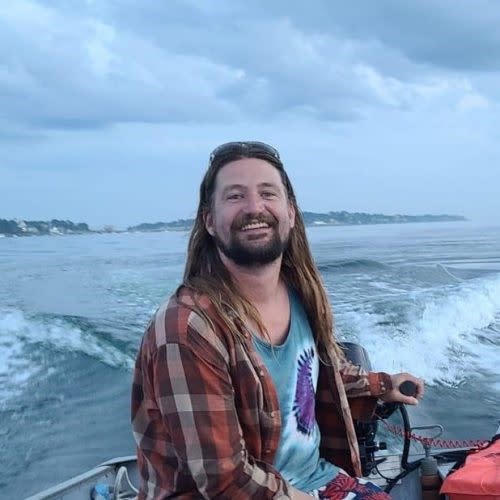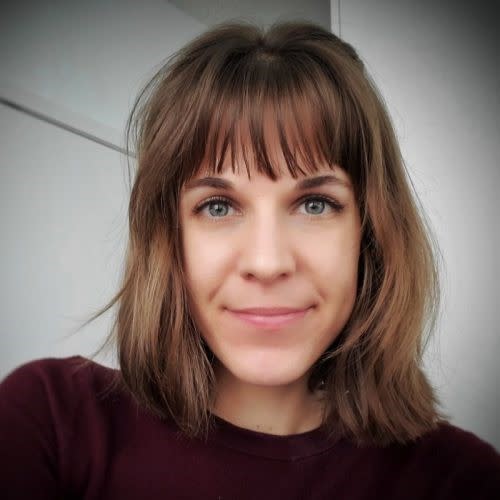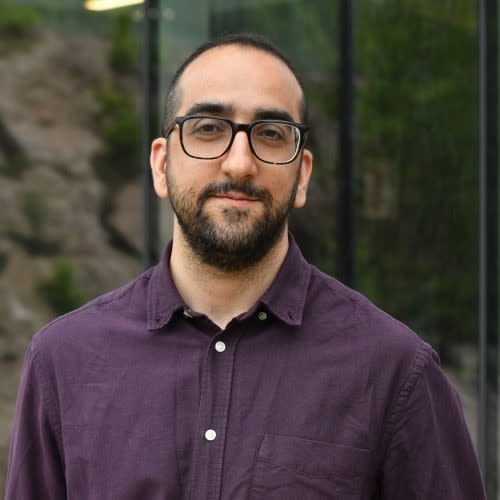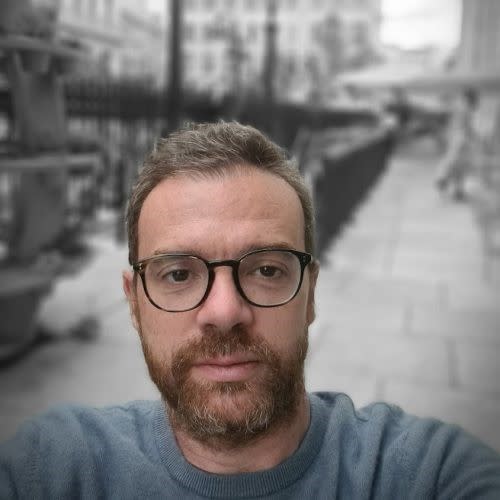Ubisoft La Forge is happy to welcome new recruits to its team! In order to learn more about these new “Forgerons”, we asked them three questions related to their career path, the future of their research topic and their recent favorite technology/paper in the field. Without further ado, meet Ben Swanson, Ylva Ferstl, Saeed Ghorbani and Ludovic Denoyer!
Ben Swanson – R&D Scientist – working on Natural Language Processing

Nice to meet you Ben! Where are you from and what is your expertise at La Forge? Ben: I recently returned to my home state of Maine, bringing several years of experience doing practical NLP at Google in San Francisco.
Interesting! Can you tell us more about your natural language processing project? Ben: We are bridging the gap between academic NLP and game development through integration of highly specific models into creator tools that are already widely used at Ubisoft, with the goal to put as much agency in the hands of the writers as possible.
Very cool! And speaking of cool, is there a recent technology or article that has particularly impressed you lately? Ben: Rethinking the Role of Demonstrations:What Makes In-Context Learning Work? – The random label results were truly surprising!
Surprising, indeed! Thanks Ben and welcome to La Forge!
Ylva Ferstl – R&D Scientist – working on Animation, Speech2Gesture

Nice to meet you Ylva! What is your path like and what is the expertise you bring to the Forge?
Ylva : Before coming to La Forge, I researched aspects of virtual character creation at Trinity College Dublin, focusing on methods of generating conversational gestures from speech. I am bringing a passion for animation generation that lets us scale to more and more diverse characters.
You can feel the passion! What do you think the future looks like in animation? Ylva : I see a bright future of large open worlds filled with countless characters that each move distinctly, immersing players in a living world.
Sounds dreamy! Last question, any good read recently? Ylva: A recent paper that I loved is Motion Puzzle: Arbitrary Motion Style Transfer by Body Part (Jang et al. 2022), which enables stylization of individual body parts of an animation.
Thanks for sharing and welcome to La Forge, Ylva!
Saeed Ghorbani – R&D Scientist – working on Animation, Speech2Gesture

Hi Saeed, nice to meet you! What strengths and knowledge do you bring to Ubisoft La Forge? Saeed: I hope I can use my knowledge of deep learning and character animation in creating more immersive and intelligent games.
And in your opinion, what does the future of your field of expertise look like? Saeed: By exploring everyday advances in machine learning, we will have more automated and efficient animation pipelines resulting in more believable worlds.
Very promising! Do you have any other knowledge that you are passionate about? Saeed: Learned Motion Matching as it is a great sample of how ML can be used in game production without sacrificing quality.
We look forward to working with you Saeed, welcome to La Forge!
Ludovic Denoyer – R&D Scientist – working on Reinforcement Learning

It’s a pleasure to meet you, Ludovic! Can you tell us more about your background and your aspirations at La Forge? Ludovic: I defended my Ph.D on machine learning in 2004, and was assistant professor and now full professor at Sorbonne University – I had different missions related to artificial intelligence and was one of the creators of the Deep Learning master program in that university. I spent one year at CRITEO in 2018 as a staff research scientist. I moved as a research scientist in the Facebook Artificial Intelligence Research lab (FAIR) during the last three and a half years, mostly focused on proposing new deep reinforcement learning models and algorithms – but my research also covers NLP, Computer vision, Graphs, etc. In addition to different research contributions, I was also the main developer of the Salina library for Reinforcement Learning research (try it, you will like it !) that aims at bridging the gap between deep learning and reinforcement learning. I expect my profile to help LaForge to accomplish ambitious research projects, to reinforce academic relations and to transfer the results of this research into concrete games.
Impressive! How do you anticipate the future of reinforcement learning? Ludovic: Reinforcement Learning is not at the same level of maturity than deep learning for computer vision or NLP for instance. Things are moving very fast, but there is still a lack of concrete applications on which we can expect to really ‘see’ the interest of such methods. Videogames is certainly one of them: It is complex, in direct interaction with humans, and last but not least, it is fun ! It would be such a pleasure to see kids and players in general being happy when playing with artificial agents.
For us too! Have you been impressed by anything in your field recently? Ludovic: What impressed me the most in the research domain is the speed at which the field is growing. I remember the time when big conferences in the field were a few dozens or hundred of participants, and now it is many thousands, with so many young and passionate people. If I have to talk about particular techniques, I must say that, even if I am not completely impressed by the underlying concepts of transformers networks, I am regularly surprised by the incredible quality they reach. A few years ago, (almost) nobody would have been convinced by the fact that such ‘simple’ models would, when trained with an enormous amount of data, be able to reach so impressive performance. And I expect to see the same effect in the reinforcement learning domain (we already saw this with MuZero) with forecasting-based approaches like decision-transformers for instance.
Thank you very much for your answers and welcome to La Forge!